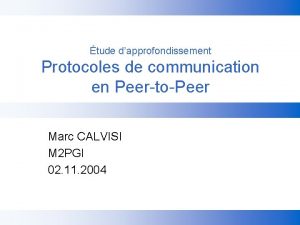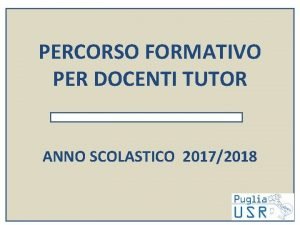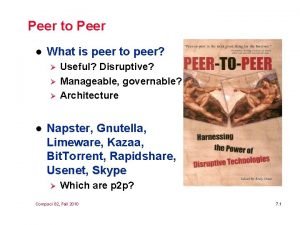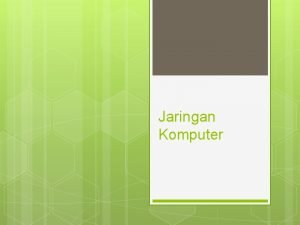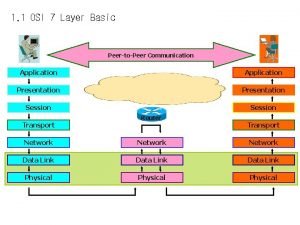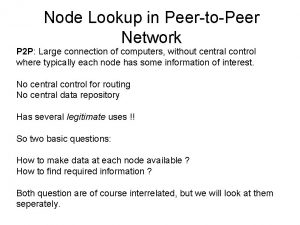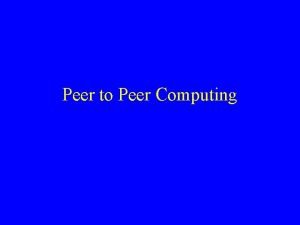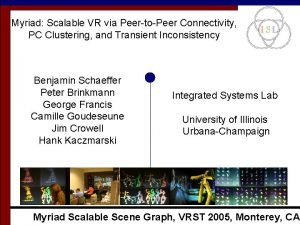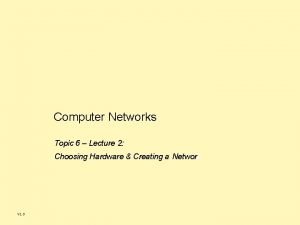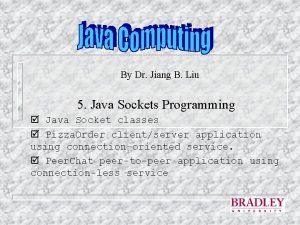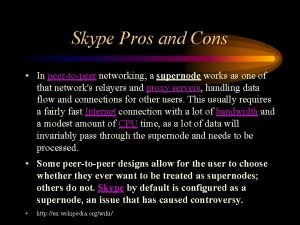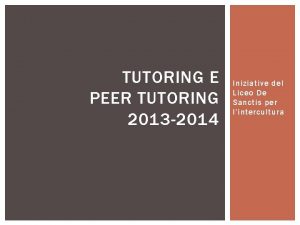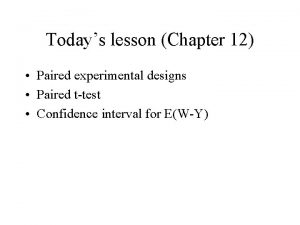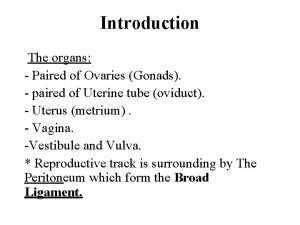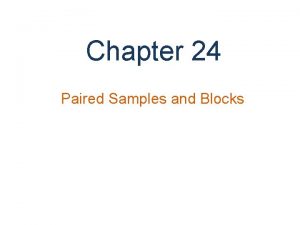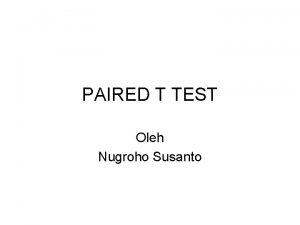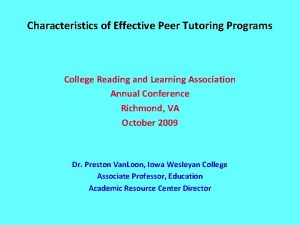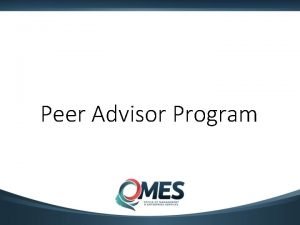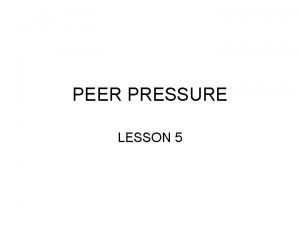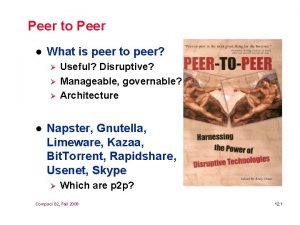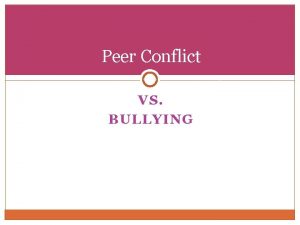Using peer tutoring to improve reading Paired Reading


























- Slides: 26

Using peer tutoring to improve reading Paired Reading: Background, Organisation & Technique Allen Thurston (Centre for Evidence & Social Innovation, Queen’s University Belfast)

What is it? Peer tutoring A better reads with another child Structured technique Errors are corrected Praise is given Talk about books to promote understanding

Why do it? To focus on reading development To improve reading for all students Roughly by 60% in primary school (129 school RCT in Fife) In secondary school for bottom 10% of readers when acting as tutors (128 class RCT in North Tyneside) It is cheap to implement

What to read High interest Books or magazines, newspapers, etc From school, public library or home Information as well as stories

Materials Readability Books should not be so easy that the tutee could read them successfully alone, but not so hard that the tutor struggles to read them! Choosing Who does and how freely? Sources Reading scheme School or public library Home

Time & place For each pair Once a week 30 minutes per session Why? Fife project 129 primary schools Year 7 No benefit to greater intensity Find a quiet place Sit comfortably side by side

Matching of students Reading ability gap Background factors e. g. age Relationships Child preference Spare tutors and tutees Parental agreement

Matching of students Cross age Year 6 tutoring Year 74

Matching of students Top student older class 3 rd top student older class Top student younger class 3 rd top student younger class 2 nd top student older class 4 th top student older class 2 nd top student younger class 4 th top student younger class

Training Tell them Demonstrate Practice Session 1 -3: Introduce Session 4 -16 Coach Give feedback Advice in manual

Checking difficulty 5 Finger Test Spread 5 fingers and put them on any page to touch any 5 words Can you read all the words successfully? Try another three pages 20 words Of the 20, the tutor should be able to read almost all successfully The tutee should be able to read fewer! Check the book is at the right level!

Talk Pause quite often to talk together about the book (words and pictures) - to make sure the tutee really understands it How does the reading connect to their life? Talk before, during and after reading Ask questions and discuss the book Advice follows……

Mistakes If the tutee says a word wrong, the tutor waits for them to put it right (up to 4 seconds) If they don’t put it right, the tutor says the word right, then the tutee repeats it correctly, then they carry on reading Tutors remember - it's OK to say you don't know! Don't guess if you are not sure - try to find out

Praise Praise for good reading of hard words or longer sections Praise for the tutee putting their own mistake right before the tutor has to help Praise very often, in different words Praise, smile and sound as if you mean it! Praise in the paired reading diary

Reading together On hard books and hard bits, read together The tutor matches their reading speed to that of the tutee Point to words only if you really need to

Reading alone Agree on the tutee’s signal to read alone (tap, knock, nudge) At that signal, the tutor praises and stops reading together

Mistakes in reading alone If tutee puts it right in 4 seconds, tutor praises and tutee goes on reading alone If the tutee doesn’t put it right in 4 seconds, the tutor reads the word, tutee repeats correctly, and pair go back to reading together Later the tutee signals again when ready to read alone, and so on. . .

Tutoring cycle

Questioning 4 levels of questioning Help mats in manual Photocopy/print and lie them out for students Build them up slowly Benefit to tutor and tutee Both need to ask questions (mats for both) Question Stop time the class Quiz time

Support and Monitoring Observation Teacher students Self-recording Tutor Tutees Both


Evaluation How will we check if reading improves? – Tests Standardised – Socio-emotional – – 2 measures Observations by research team – GL Checklists Error counting Observations by school team Project Lead Teachers Tutors Tutees

Feedback to students Verbal Written Audio visual Feedback from students Group or individual Verbal Written Feedback from staff Feedback from parents

Notes to remember Keep a reading record card – get the students to fill it in at the end of each session Keep the tutors and tutees the same As the students progress, work on expanding the talking, questioning and thinking about what they are reading

Further details and advice Allen Thurston: a. thurston@qub. ac. uk

QUESTIONS
 Annotazioni sulla verifica effettuata peer to peer
Annotazioni sulla verifica effettuata peer to peer Peer-to-peer
Peer-to-peer Peer to peer transactional replication
Peer to peer transactional replication Peer to peer transactional replication
Peer to peer transactional replication Konsep dasar jaringan komputer
Konsep dasar jaringan komputer Esempio registro peer to peer compilato
Esempio registro peer to peer compilato Scheda osservazione tutor compilata
Scheda osservazione tutor compilata Relazione finale docente tutor compilata
Relazione finale docente tutor compilata Peer to peer l
Peer to peer l Peer to peer merupakan jenis jaringan… *
Peer to peer merupakan jenis jaringan… * Bitcoin: a peer-to-peer electronic cash system
Bitcoin: a peer-to-peer electronic cash system Features of peer to peer network and client server network
Features of peer to peer network and client server network Programmazione e sviluppo condiviso peer to peer
Programmazione e sviluppo condiviso peer to peer Peer-to-peer communication in osi model
Peer-to-peer communication in osi model Peer p
Peer p Addresss look up
Addresss look up Peer-to-peer o que é
Peer-to-peer o que é Peer to peer computing environment
Peer to peer computing environment Peer to peer intervention
Peer to peer intervention Peer-to-peer o que é
Peer-to-peer o que é Peer-to-peer o que é
Peer-to-peer o que é Peer to peer network hardware
Peer to peer network hardware Peer to peer chat application in java
Peer to peer chat application in java Skype cons
Skype cons Jaringan peer to peer diistilahkan dengan
Jaringan peer to peer diistilahkan dengan Spotlight on paired passages
Spotlight on paired passages While reading activities
While reading activities

